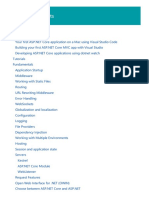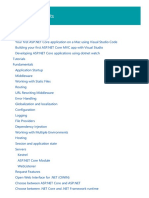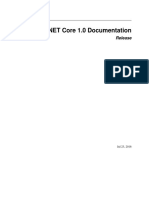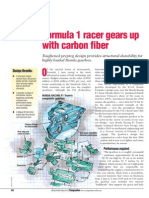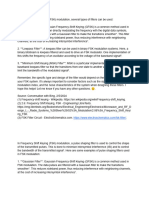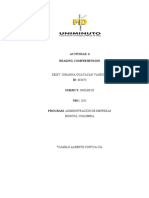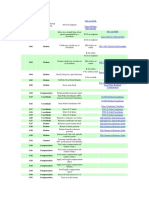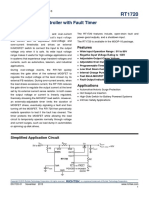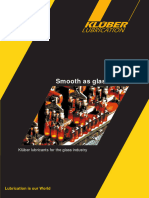0% found this document useful (0 votes)
12 views11 pagesTopic 7 ASP NET Core
.NET Core is an open-source, cross-platform framework designed for building modern, high-performance applications, allowing developers to utilize only the necessary components. ASP.NET Core, a subset of .NET Core, focuses on web applications and services, featuring modularity, integrated dependency injection, and a unified MVC and Web API framework. The document also outlines the application and request life cycle in ASP.NET Core MVC, detailing routing, model binding, action execution, and result execution.
Uploaded by
climpplimpCopyright
© © All Rights Reserved
We take content rights seriously. If you suspect this is your content, claim it here.
Available Formats
Download as PPTX, PDF, TXT or read online on Scribd
0% found this document useful (0 votes)
12 views11 pagesTopic 7 ASP NET Core
.NET Core is an open-source, cross-platform framework designed for building modern, high-performance applications, allowing developers to utilize only the necessary components. ASP.NET Core, a subset of .NET Core, focuses on web applications and services, featuring modularity, integrated dependency injection, and a unified MVC and Web API framework. The document also outlines the application and request life cycle in ASP.NET Core MVC, detailing routing, model binding, action execution, and result execution.
Uploaded by
climpplimpCopyright
© © All Rights Reserved
We take content rights seriously. If you suspect this is your content, claim it here.
Available Formats
Download as PPTX, PDF, TXT or read online on Scribd
/ 11

